Philip Mountbatten, 1921-2021
Queen Elizabeth's husband has died two months shy of his 100th birthday.
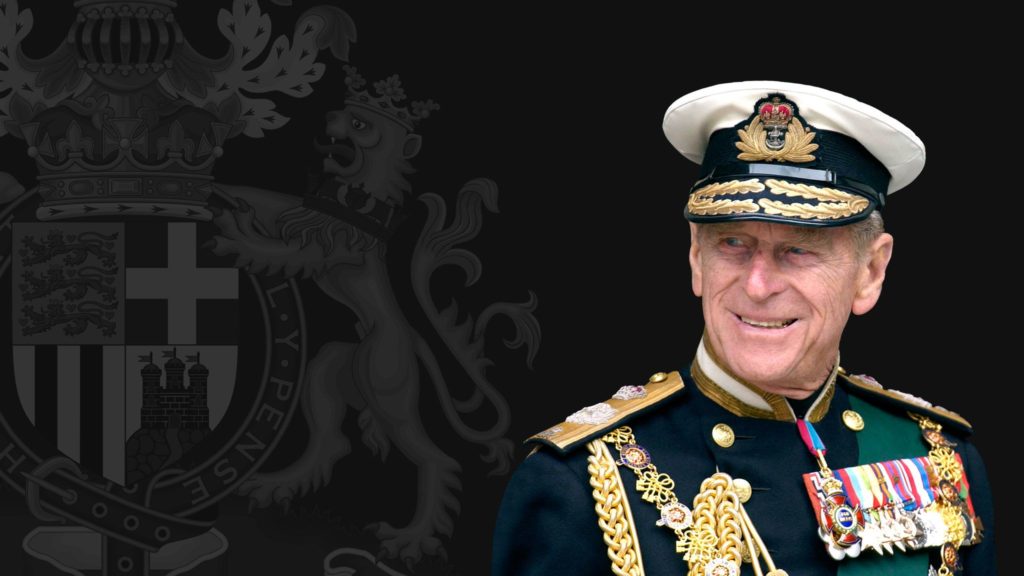
BBC (“Prince Philip has died aged 99, Buckingham Palace announces“):
Prince Philip, Queen Elizabeth II’s husband, has died aged 99, Buckingham Palace has announced.
Buckingham Palace said: “It is with deep sorrow that Her Majesty The Queen has announced the death of her beloved husband, His Royal Highness The Prince Philip, Duke of Edinburgh.
“His Royal Highness passed away peacefully this morning at Windsor Castle.”
Boris Johnson said he “inspired the lives of countless young people”.
Speaking at Downing Street, the prime minister added: “He helped to steer the Royal Family and the monarchy so that it remains an institution indisputably vital to the balance and happiness of our national life.”
Mr Johnson said he received the news of the duke’s death “with great sadness”.
“Prince Philip earned the affection of generations here in the United Kingdom, across the Commonwealth, and around the world,” he said.
Paying tribute to the duke’s role as the longest serving consort in history, Mr Johnson also remembered Prince Philip as one of the last surviving people to have fought in World War II.
“From that conflict he took an ethic of service that he applied throughout the unprecedented changes of the post-War era,” Mr Johnson said.
“Like the expert carriage driver that he was, he helped to steer the Royal Family and the monarchy so that it remains an institution indisputably vital to the balance and happiness of our national life.”
NYT (“Prince Philip, Husband of Queen Elizabeth II, Is Dead at 99“):
Prince Philip, the Duke of Edinburgh, husband of Queen Elizabeth II, father of Prince Charles and patriarch of a turbulent royal family that he sought to ensure would not be Britain’s last, died on Friday at Windsor Castle in England. He was 99.
His death was announced by Buckingham Palace, which said he passed away peacefully.
Philip had been hospitalized several times in recent years for various ailments, most recently in February, the palace said.
He died just as Buckingham Palace was again in turmoil, this time over Oprah Winfrey’s explosive televised interview with Philip’s grandson Prince Harry and Harry’s biracial wife, Meghan, on March 7, when the couple, in self-imposed exile in California, lodged accusations of racism and cruelty against members of the royal family.
As “the first gentleman in the land,” Philip tried to shepherd into the 20th century a monarchy encrusted with the trappings of the 19th. But as pageantry was upstaged by scandal, as regal weddings were followed by sensational divorces, his mission, as he saw it, changed. Now it was to help preserve the crown itself.
And yet preservation — of Britain, of the throne, of centuries of tradition — had always been the mission. When this tall, handsome prince married the young crown princess, Elizabeth, (he at 26, she at 21) on Nov. 20, 1947, a battered Britain was still recovering from World War II, the sun had all but set on its empire, and the abdication of Edward VIII over his love for Wallis Simpson, a divorced American, was still reverberating a decade later.
The wedding held out the promise that the monarchy, like the nation, would survive, and it offered that reassurance in almost fairy-tale fashion, complete with magnificent horse-drawn coaches resplendent in gold and a throng of adoring subjects lining the route between Buckingham Palace and Westminster Abbey.
More, it was a heartfelt match. Elizabeth told her father, King George VI, that Philip was the only man she could ever love.
Philip occupied a peculiar place on the world stage as the husband of a queen whose powers were largely ceremonial. He was essentially a second-fiddle figurehead, accompanying her on royal visits and sometimes standing in for her.
And yet he embraced his royal role as a job to be done. “We have got to make this monarchy thing work,” he was reported to have said.
BBC royal correspondent Jonny Dymond (“Prince Philip: An extraordinary man who led an extraordinary life“):
He outlived nearly everyone who knew him and might explain him.
And so we have been left with a two-dimensional portrait of the duke; salt-tongued and short-tempered, a man who told off-colour jokes and made politically incorrect remarks, an eccentric great-uncle who’d been around forever and towards whom most people felt affection – but who rather too often embarrassed himself and others in company.
With his death will come reassessment. Because Prince Philip was an extraordinary man who lived an extraordinary life; a life intimately connected with the sweeping changes of our turbulent 20th Century, a life of fascinating contrast and contradiction, of service and some degree of solitude. A complex, clever, eternally restless man.
His mother and father met at the funeral of Queen Victoria in 1901. At a time when all but four of Europe’s nations were monarchies, his relatives were scattered through European royalty. Some royal houses were swept away by World War One; but the world into which Philip was born was still one where monarchies were the norm. His grandfather was the King of Greece; his great-aunt Ella was murdered along with the Russian tsar, by the Bolsheviks, at Ekaterinberg; his mother was a great-granddaughter of Queen Victoria.
His four older sisters would all marry Germans. While Philip fought for Britain in the Royal Navy, three of his sisters actively supported the Nazi cause; none would be invited to his wedding.
When peace came, and with it eventual economic recovery, Philip would throw himself into the construction of a better Britain, urging the country to adopt scientific methods, embracing the ideas of industrial design, planning, education and training. A decade before Harold Wilson talked of the “white heat of the technological revolution”, Philip was urging modernity on the nation in speeches and interviews. And as the country and the world became richer and consumed ever more, Philip warned of the impact on the environment, well before it was even vaguely fashionable.
The British monarchy has always struck me as an oddity and I know its modern incarnation mostly through fiction. I came to appreciate its pressures from Tom Clancy’s Patriot Games, the second of his Jack Ryan books and a prequel to the first, Hunt for Red October. And Philip has been a central character of the very good (but extremely fictionalized) Netflix series The Crown.
Dymond is right that Philip lived an extraordinary life, although it must have been a very odd one. He was born a prince in a monarchy that was overthrown and married into a figurehead monarchy and then elevated to consort when his wife became Queen. And thereby went from a promising career as a Navy officer to second banana, a role we still see as noteworthy when it’s the American Vice President’s husband doing it but must have been quite uncomfortable in 1947.

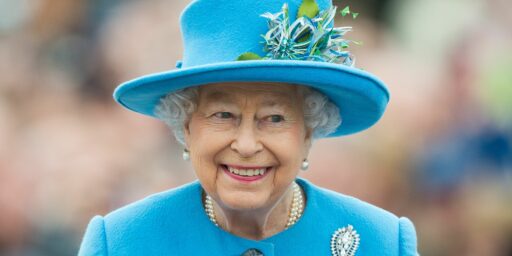
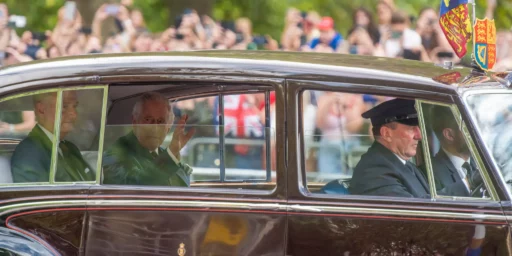
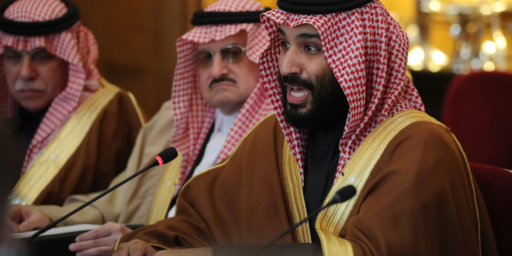

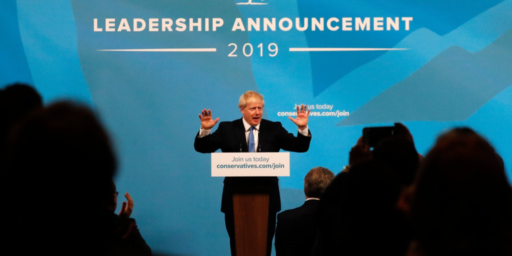
May he Rest in Peace
Interestingly due to his links to the Greek, Danish, and British Royal families, Philip had more “royal blood” than his wife..
Regarding the second banana awkwardness, I’m thinking of that Danish prince that refused to be buried next to his wife (the queen) because she wouldn’t make him “king consort”. Bizarre relationships at that level.
When he retired from public duties at age 96, someone remarked that Philip was “standing back.” Said Philip: “I can hardly stand up.”
To think, the Queen and Philip were married longer than many of today’s elderly people have been alive. They were Victorians and watched the world change within their adult lifetimes. My parents are in their 70s, and think of themselves as having been born ‘one foot in the Old World’.
@Doug Mataconis: I find it fascinating whenever I encounter all the intermarriage of European royal families. It’s a wonder they don’t all have 6 fingers (Anne Boleyn). It also led me to the odd concept of Morganatic marriage, not applicable to Philip, which is an institution someone felt was necessary to ensure that royalty marrying commoners could not pass their royal privileges to the lower-status spouse or any children.
I also find it interesting how no European royalty I am aware of has ever married into Asian/African/American/wherever else royalty.
@Joe:
Well, Prince Rainier of Monaco married Grace Kelly of Hollywood via Philadelphia, if that counts.
@Joe:
I can’t resist quoting Caesar in the movie “Cleopatra”: …long line of inbred mental defectives.
The Ptolemies married their siblings, though, which is worse. For Queen Victoria’s extended family, there’s rampant hemophilia (that we know about)
As to royalty in the Americas, there ins’t any. Brazil was a going empire for some years, but I think that royal family came from Portugal.
Mexico was en empire twice. Once upon independence when Agustín de Iturbide proclaimed himself Emperor Agustín I. that ended quickly. The second time, an imported emperor was imposed from without by Napoleon III, in the form of a minor Austrian noble called Maximilian. That ended bloodily.
@Joe:
And Prince Harry married Meghan Markle, an African American.
Maybe he was perfectly happy being second banana. In my marriage we’ve swapped that spot back and forth whenever it was useful to do so. There was no unhappiness associated with it because we are on the same team, we’re us, in the bubble, and the rest of the world is not. That was the paradigm we settled on quite early: us and not us. We do well, we do poorly, we win, we lose.
@CSK and Kathy: While I think anyone indigenous we would recognize as “royalty” in the Americas was probably reduced to peonage promptly upon European conquest and I understand celebrity probably stands in the place of royalty at least here in the U.S., there are still plenty of Asian and African royals roaming around and yet all that need for “proper breeding” doesn’t really seem to rest on simple royal lineage, but a certain kind of royal lineage, shall I just say “European” lineage.
That got me thinking about pre-WW I history. France and Switzerland are the obvious ones. San Marino (almost insignificant, but a country). OK, number 4? Most of Central Europe and the Balkins were under an Empire (German, Ottoman, Russian or Austro-Hungarian). Andorra? Nope, not hereditary but a co-Principality. Portugal, kingdom until 1910. Ireland, still part of the UK. Finland, part of Russia (Grand Duchy of Finland).
A few years back I spent an afternoon chasing heirs to the Throne of former European monarchies (some extinct lines) and most are doing quite well as businessmen. The heir to the Korean Kingdom (became a member of Japanese royalty) though is running a mini-mart in Los Angeles.
@Joe:
It’s complicated.
The Moors in Spain led to several marriages that could be categorized as African:
https://aaregistry.org/story/queen-philippa-of-england-born/
https://aaregistry.org/story/englands-first-black-queen-sophie-charlotte-born/
Prince Maxmilian of Lichtenstein msarries an Afro-Panamanian fashion designer from New York, Angela Brown. This is interesting:
http://www.nytimes.com/2017/11/30/us/black-princess-meghan-markle.html
@Joe: For a lot of the time royal marriages were a political thing, not a personal one.
Marriage to a fellow national could be a major political issue when monarchs were genuine power holders, so a foreign royal was often safer.
But that was also restricted: Catholics and Protestant intermarriages could be tricky (hence the lack of Habsburg-Hohenzollern or Bourbon-Hanover links).
Protestants however(and Russians, curiously enough) had hundreds of Germanic princely families available. So intermarriage was not an issue.
It was for the Habsburg/Bourbon lines due to repeated 17th/18th century attempts to consolidate the lines of inheritance)
But the whole issue has become irrelevant since the end of the last “executive monarchies” (i.e. Russia, Austria-Hungary and Germany) in the First World War.
King George IV was married to a non-royal, and nobody gave it a second thought AFAIK.
The remaining European royals (Scandinavian, Low Countries and Spain) have married “commoners” without any concern.
(“Commoner” being sometimes a relative term, though; the Spencers were “commoners” but also were Lords Palatine in the North when the ancestral Saxe-Coburgs were inhabited a wooden farmhouse in Thuringia)
As for non-European royals; well, the Japanese and Thais are pretty isolated socially. There is a multiplicity of eligible Arabians, but again, it’s a matter of non-intersecting social circles.
@Joe:
Not necesarily.
See the house of the Dukes of Moctezuma de Tultengo
That’s from the Aztec side. Quite a few Mixtec etc. families who were allies of the Spaniards against the Aztec became Spanish-Mexican “nobility” as well.
@Michael Reynolds: Oh, that’s absolutely the right attitude. But Philip was decades older than either of us. Hell, his son, Charles, is quite a bit older than you.
And, while I’m influenced by the Philip character on The Crown, he did in fact get quite upset that his children were styled Windsor rather than Mountbatten, complaining, “I am the only man in the country not allowed to give his name to his children.”
@Jen and CSK have, as so often happens among the commentariat here, come to my rescue with some interesting information.
While @JohnSF‘s observation about it being political, not romantic, is not news, to me it makes it perhaps more damning that they were uninterested building those political relationships in the past or even recently.
I didn’t follow the whole Meagan/Harry adventure, but I assume these predecessors were the subject of some discussion around the novelty of Meagan to the royal family.
BTW, sorry to burden the Philip benedictions with this tangent.
@Michael Reynolds:
Reminds me of a Bill Callahan tune “Pigeons”:
Outside of Concan, the groom noticed the gold band on my left hand
And said “You got any advice for us, old man?”
Well, I thought for a mile, as I drove with a smile
Then I said when you are dating, you only see each other
And the rest of us can go to hell
But when you are married, you’re married to the whole wide world
The rich, the poor
The sick and the well
The straights, and the gays
And the people who say we don’t use these terms these days
The salt and the soil
@James Joyner:
Yes, the “Windsor” thing is odd.
Goes against all the previous rules of dynastic naming.
Contra “The Crown” the family name has changed, to Mountbatten-Windsor.
But the formal name of the Royal House remains Windsor.
I suspect it was a choice to emphasize continuity in the post-war environment of shocking, sudden, change.
And maybe, in a country recently in two bloody wars with Germany, to avoid calling attention to the Germanic links of the royals.
@JohnSF:
From what I’ve read, that was the exact reason. George V wanted to avoid any association with Germany. What could be more “English” than Windsor?
Someone is said to have commented that the royal family was an “alien and uninspiring court.” George V is reputed to have snapped: “I may be uninspiring, but I’ll be damned if I’m alien.”
@CSK:
It was H. G. Wells who said that.
@CSK:
Yes, that was the reason for the formal shift from “Saxe-Coburg Gotha” to “Windsor” during WW1.
But the oddity I was thinking of was that it will remain Windsor, not shift to Mountbatten, when Charles becomes king.
And that was decided even before he was born!
It’s as if the successors of Queen Anne remained House of Stuart rather than switching to House of Hanover.
If only they’d been a bit more forward thinking they could have really flummoxed the Jacobites!
(In fact, just niggles at my historicist conservatism)
Yes, Edward VII and George V (until WW1) were of the house of Saxe-Coburg-Gotha, at which time patriotic feelings caused the King to change the family surname to Windsor. In addition to his direct descent from Queen Victoria, Philip was a grand-nephew of the ill-fated Alexandra, last Romanov empress.
Good article on Prince Philip’s background over at The Guardian. Rest in Peace. We’re seeing the passing of an age.
@JohnSF: Yes, the Windsor-Mountbatten thing came much later. And only applies to those without HRH status.
I’m skeptical that there are significant numbers of people under 20 who spend much time thinking about Prince Philip at all, much less being inspired by him.
@Stormy Dragon:
Johnson just set brain/mouth interface to “auto-waffle” again.
It’s rather annoying, really.
For someone reputed to be a good public speaker, he could at least put the effort in.
@Stormy Dragon: I’m fairness, he didn’t claim that those he inspired are young *now*.
@JohnSF: @SC_Birdflyte:
Mountbatten was originally Battenberg. Mountbattens is a translation from the German.
@Stormy Dragon:
No, actually this one has a basis in fact. The Duke of Edinburgh’s Award is perhaps Philip’s most enduring personal legacy, and has in fact affected the lives of countless kids in a positive way.
https://www.bbc.com/news/uk-42651950? is a good backgrounder
@CSK:
British branch of the family (Louis, Philip’s grandfather) switched to Anglicized version at same time as Royal Family dropped Saxe-Coburg Gotha, and for similar reasons.
Louis had been a naturalize subject from 1868, and a career naval officer; he was First Sea Lord (i.e. effective professional/operational head of the navy) from 1910 to October 1914.
Louis was also given a British hereditary peerage, Marquess of Milford Haven on the change of name. He was already royal cousin as Louis mother was Princess Beatrice, daughter of Queen Victoria.
@JohnSF:
Yep.
I’ve read that Louis (“Uncle Dickie”) engineered the meet between Elizabeth and Philip, just as he later tried to promote a match between Prince Charles and his granddaughter Amanda Knatchbull.
I’ve also heard that Louis was known as Uncle Dickie because of his unusually large endowment. That may be apocryphal.
@CSK:
Ah, that Louis (the family tree can be confusing) was the youngest son of First Sea Lord Louis. He was Prince Philip’s uncle via his elder sister,Philip’s mother.
Philip’s father was Prince Andrew of the House of Schleswig-Holstein-Sonderburg-Glücksburg, a younger son of the King of Greece but dropped the Greek and Danish names and titles and adopted Mountbatten as surname in 1947.
(Again I suspect because they were too German-sounding for comfort at the time)
And one vague rumour is that Queen Mary and Queen Elizabeth (the widows of George V and George VI) were so keen on Windsor continuing to be the dynastic name was that they disliked Louis Jr as a pushy schemer. How true? Dunno.
«Yes, the “Windsor” thing is odd.
Goes against all the previous rules of dynastic naming.»
It is very common (at least informally) in countries where women can inherit the throne : the descendents of Maria Theresa of Habsburg and Francis of Lorraine are still called “the Habsburgs” (even if the formal name is “Habsburg-Lothrigen”); the descendents of D. Maria II de Bragança and D. Fernando de Saxe-Coburgo-Gotha are also called “the Braganças” ( the complete name was usually “de Saxe-Coburgo-Gotha e Bragança”, but usually with “Bragança” at the last name, when in Portugal the last name is by tradition the family name of the father); the descendents of Wilhelmina of Netherlands and Henry of Mecklenburg-Schwerin, of Juliana of Netherlands and Bernhard of Lippe-Biesterfeld, and of Beatrix of the Netherlands and Klaus von Amsberg are usually called “Orange-Nassau” (even if their official names are something like “van Oranje-Nassau van Amsberg”; but, even that, they are not “van Lippe-Biesterfeld van Amsberg”, or “van Mecklenburg-Schwerin van Lippe-Biesterfeld van Amsberg”….)
@JohnSF:
I’ve read that, too.
Charles adored Mountbatten.
@Miguel Madeira:
That’s interesting!
Something to do with the application of the Salic Law perhaps?
But the thing is, in Britain women CAN transmit, inherit and reign.
see Matilda – though THAT caused civil war) Mary, Elizabeth I, Mary II, Anne, Victoria and of course Elizabeth II.
But the dynasty name has switched when the regnant queen had issue from marriage – to Plantagenet and to Saxe-Coburg Gotha.
The thing is of course that a lot of the princely families are international, and of course surnaming varies even within European traditions (Portugal being one example of variance from the “English” norm; Scandinavian and Russian patro(& matro)nymics another; Gaelic and Anglo-Irish clan/sept/family lineages a third type).
And a lot of aristocrats don’t have “surnames” as ordinarily thought of in American and English usage. Even English aristocracy can sometimes have alternative “surnames”: that of the title used as surname e.g. “Devonshire” or familial name e.g. “Cavendish”; and as I understand it the Germans tend to mix them up.
I’ll have to ask my prospective “niece in law” sometime for info. on current German usage; she’s German and a “von”.
@JohnSF:
Yes; in the Portuguese and Dutch cases that I mentioned, the kings and queens seem to be simply “of Portugal” or “of Holland”; it is in the non-royal descendants that the “Bragança” or “Orange-Nassau” seems to appear explicit in the name (and the Portuguese princesses who married wit foreigner kings or aristocrats seems also to be usually designated as “of Portugal”; an exception: Catarina de Bragança, wife of King Charles II of England)